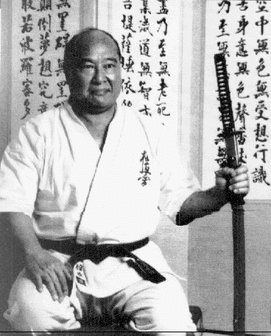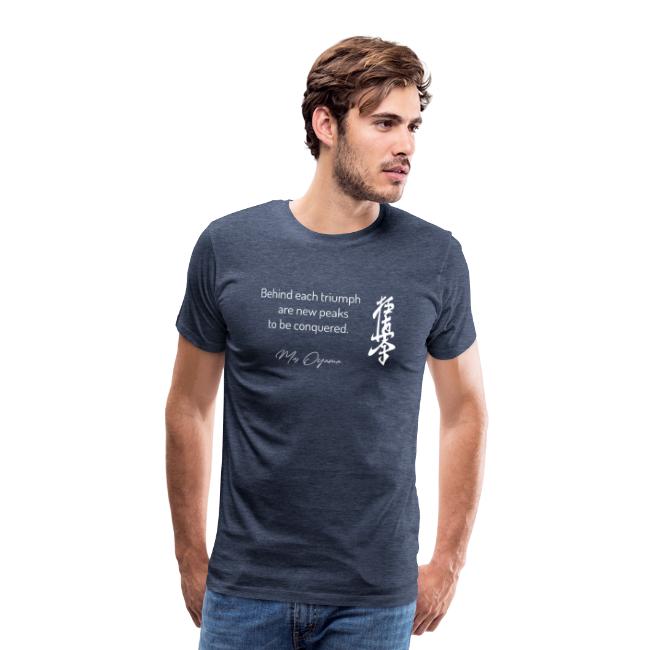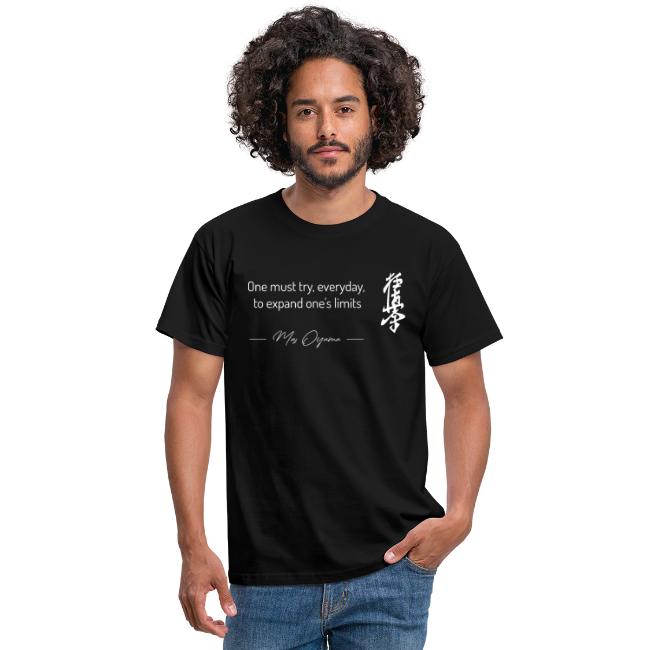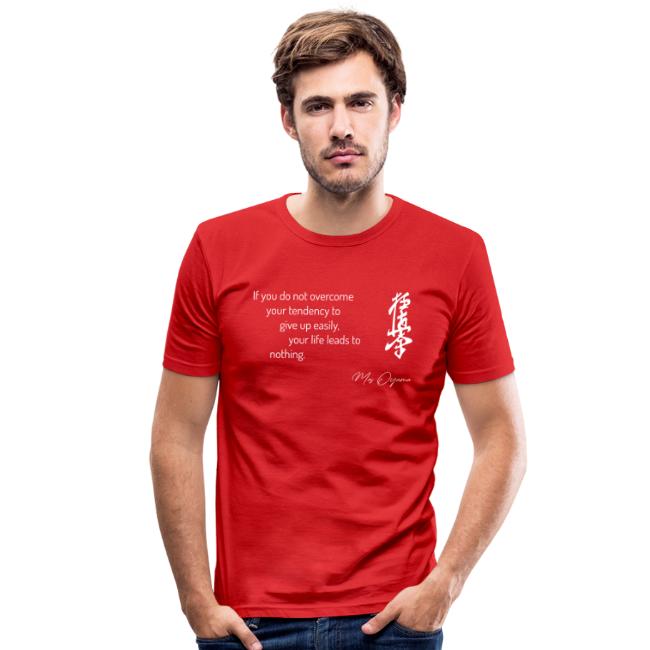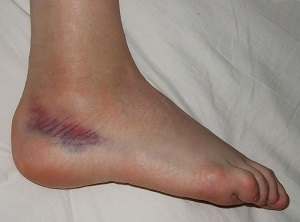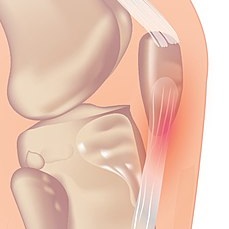Kyokushin Karate, also known as Kyokushinkai, is a full contact, self-defense style of karate that was developed in Japan by Masutatsu Oyama (大山倍達) in 1964. Kyokushin is one of the three major traditional styles of karate, along with Shotokan and Wado-ryu.
極真会 (Kyokushinkai) is a Japanese word that means “the association of the absolute truth” or “the association of the ultimate truth.” This is the name of a popular style of karate, and the word 極真 (Kyokushin) is also used on its own to refer to this style. The individual characters of the word have the following meanings:
- 極 (Kyoku) – “absolute,” “utmost,” or “ultimate”
- 真 (Shin) – “truth” or “reality”
- 会 (Kai) – “association” or “society”
Together, these characters combine to form the word 極真会, which refers to the association or society dedicated to the study and practice of Kyokushin karate.
Kyokushin has three categories of competition: Kihon, Kata, and Kumite. The first two are pre-arranged fight scenarios where competitors are judged by points on the quality of their performance. The third category is an unscripted fight without any rules or restrictions. Kyokushin has some striking similarities to Western boxing but the major difference is that Kyokushin emphasizes more on kicks and knees than punches. It is also one of the few styles that allows kicks, punches and knee/elbow strikes to all parts of the body above and below the belt while sparring.
Kyokushin emphasizes full contact sparring between two people. It is now known as “full contact karate” or “Knockdown karate” due to its emphasis on physical, full-force sparring (after the name for its competition rules). Full contact sparring means that the fighters don’t wear any protective gear like heavy gloves on the hands, for example. In Kyokushin, the objective in training kumite (fighting) is to inflict maximum damage to one’s opponent with real techniques from any angle using any range of motion and power available.
It’s not just about fighting; it is also about self-development and discipline.
Kyokushin Karate History & Founder
Mas Oyama was born in July 1923 in Kintei, Chōsen, as Choi Young-Eui (최영의). At the age of nine, Oyama began learning Chinese martial arts from a Chinese farmer who worked on his sister’s farm.
In March 1938, Oyama accompanied his brother to the Imperial Japanese Army’s Yamanashi Aviation School, where he enrolled. Choi Young-Eui chose his Japanese name, Oyama Masutatsu, sometime during his period in Japan. After the war, Oyama departed the aviation school and settled in Tokyo. He finally found a place to call home. This is when he met his future wife, Chiyako Oyama, whose mother owned a university student housing.
During his studies at the Takushoku University in Tokyo he was accepted as a student at Gichin Funakoshi’s dojo, where he studied for two years. After that, Oyama spent several years studying Goju-ryu karate with Nei-Chu So, a fellow Korean from Oyama’s home area.
Oyama founded his own karate dojo, Oyama Dojo, in 1953. His dojo was originally placed outside in an empty lot, but in 1956 it was relocated to a dance school. Oyama set out to create an objective form of training that would be effective against an attacker or opponent of different sizes or strengths. He wanted to create something that could be learned quickly, but also teach the basics of self-defense over time.
Oyama’s original curriculum quickly gained a reputation as a rigorous, intense, hard-hitting, but practical style, and in 1957 it was officially titled Kyokushinkai. As the dojo’s reputation expanded, students from both inside and beyond Japan were drawn to train there, and the number of pupils increased. During this time, many of the future senior leaders of today’s numerous Kyokushin-based organizations began training in the style.
In 1964, Oyama relocated the dojo to the facility that would become the Kyokushin home dojo and world headquarters from then on. The first All-Japan Full Contact Karate Open Championships were held in Oyama in 1969, and they were a huge success.
Ranks
Kyokushinkai karate uses a grading system to evaluate and rank the progress of its practitioners. This system is based on the traditional Japanese martial arts ranking system, which uses kyu and dan grades to indicate the level of proficiency and skill. In Kyokushinkai karate, the kyu grades are the lower levels and the dan grades are the higher levels. 級 (Kyu) which means “class,” “rank,” or “grade”.
The grading system is as follows:
Kyu ranks:
- Jukyu (十級) – Orange belt (10th kyu)
- Kukyu (九級) – Orange belt (9th kyu)
- Hachikyu (八級) – Blue belt (8th kyu)
- Shichikyu (七級) – Blue belt (7th kyu)
- Rokukyu (六級) – Yellow belt (6th kyu)
- Gokyu (五級) – Yellow belt (5th kyu)
- Yonkyu (四級) – Green belt (4th kyu)
- Sankyu (三級) – Green belt (3rd kyu)
- Nikyu (二級) – Brown belt (2nd kyu)
- Ikkyu (一級) – Brown belt (1st kyu)
Dan ranks:
- Shodan (初段) – Black belt with one stripe
- Nidan (二段) – Black belt with two stripes
- Sandan (三段) – Black belt with threes tripes
- Yondan (四段) – Black belt with four stripes
- Godan (五段) – Black belt with five stripes
- Rokudan (六段) – Black belt with six stripes
- Shichidan (七段) – Black belt with seven stripes
- Hachidan (八段) – Black belt with eight stripes
- Kudan (九段) – Black belt with nine stripes
- Juppan (十段) – Black belt with ten stripes
Famous Quotes by Oyama
Buy a cool T-shirt with a famous quote by Masutatsu Oyama today.
One becomes a beginner after 1000 days of training. One becomes a master after 10,000 days of practice.
Mas Oyama
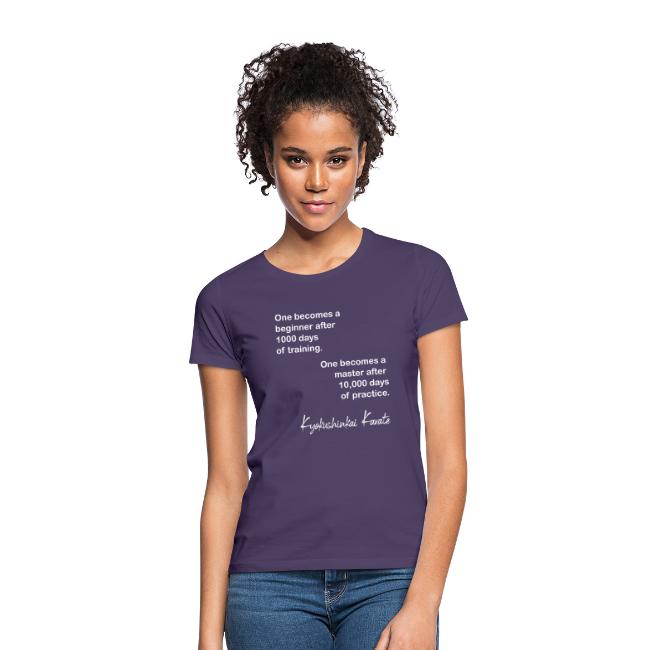
Kyokushin promotes aliveness, physical toughness, and full-contact sparring in its curriculum. The Kyokushin curriculum has influenced many other karate organizations and styles.

